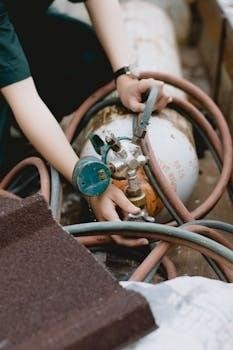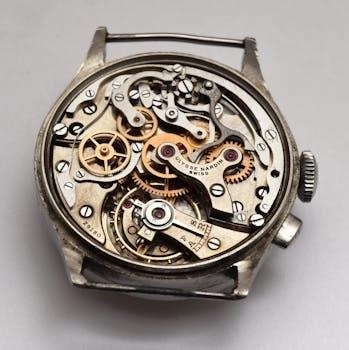The Bennett Mechanical Comprehension Test (BMCT), also known as the Bennett Mechanical Aptitude Test, is a popular assessment used to measure understanding of mechanical principles. It’s a multiple-choice test with illustrated questions. The BMCT assesses a candidate’s ability to perceive and understand how physical forces and mechanical elements relate to one another.
What is the Bennett Mechanical Comprehension Test (BMCT)?
The Bennett Mechanical Comprehension Test (BMCT) is a widely used aptitude test designed to evaluate an individual’s understanding of mechanical concepts and principles. Often used in the recruitment process, the BMCT assesses a candidate’s ability to apply these concepts to practical situations. It’s a multiple-choice test with visual aids, typically consisting of illustrations or diagrams. The test measures a person’s capacity to understand how physical forces and mechanical elements interact. Unlike some other mechanical aptitude tests, the BMCT focuses on general mechanical ideas rather than specific technical knowledge. The test is designed to predict how well a test-taker may perform in vocational and technical training settings and is considered one of the most popular yet challenging mechanical aptitude assessments. It is used by many major employers.

BMCT Test Structure and Format
The BMCT typically includes 55 multiple-choice questions to be completed within a 25-minute time limit. Questions are presented with clear illustrations and assess various mechanical concepts.

Number of Questions and Time Limit
The Bennett Mechanical Comprehension Test, specifically the BMCT-II version, consists of a total of 55 multiple-choice questions. Test takers are allotted a strict time limit of 25 minutes to complete the entire assessment. This time constraint emphasizes both accuracy and speed in answering the questions. The questions are drawn from a large bank of over 300, ensuring that each test is unique. The combination of a limited time and a moderate number of questions makes efficient time management and a solid understanding of mechanical concepts essential for success on the BMCT.
Multiple-Choice Format and Visual Aids
The Bennett Mechanical Comprehension Test utilizes a multiple-choice format, where each question presents several answer options, and the test-taker must select the most correct one. A distinctive feature of the BMCT is its reliance on visual aids. Each question is accompanied by an illustration or diagram designed to clearly depict the problem or situation being presented. These visuals are intended to be straightforward and easy to understand, providing context for the mechanical principles in question. The use of high-quality images ensures that the test-taker can focus on the mechanical concepts rather than being distracted by poor graphics. This visual approach is essential for understanding the practical applications of mechanical concepts.
Types of Questions and Topics Covered

The Bennett Mechanical Comprehension Test covers a broad range of mechanical concepts and principles. Questions are designed to assess your understanding of how forces, motion, and simple machines interact. Specific topics include acoustics and optics, evaluating basic physical properties of sound and light, and understanding the Doppler effect. Other areas explored are gears, levers, and pulleys, focusing on how these devices function and affect mechanical advantage. Questions also delve into concepts of fluid mechanics, addressing topics like pressure and buoyancy. Furthermore, questions examine basic concepts of physics and mechanics, including topics like gravity and force. The test includes a variety of practical situations and problem-solving scenarios to evaluate your grasp of these principles.

Preparing for the BMCT
Effective preparation for the BMCT involves utilizing practice questions and tests to familiarize yourself with the format, content, and time constraints of the exam. Time management is also essential.
The Importance of Practice Questions
Practice questions are crucial for success on the Bennett Mechanical Comprehension Test. They allow you to become familiar with the test’s format, including multiple-choice questions and the use of illustrations. By working through practice questions, you can identify your strengths and weaknesses, enabling you to focus on areas where you need improvement. Furthermore, practice helps you understand the types of mechanical concepts that are commonly tested, such as levers, gears, and pulleys. Regular practice also improves your speed and accuracy, essential for completing the test within the time limit. Exposure to sample questions reduces anxiety and increases confidence going into the actual test. Additionally, practice helps in the process of learning how to visually interpret problems efficiently.
Free vs. Paid Practice Resources
When preparing for the Bennett Mechanical Comprehension Test, you’ll encounter both free and paid practice resources. Free resources often include sample questions and basic study guides, offering an initial introduction to the test format and question types. They can be a good starting point for familiarizing yourself with the BMCT. However, paid resources typically provide more comprehensive materials, such as full-length practice tests, detailed explanations of answers, and a wider variety of question types. These resources often mirror the actual test more closely and may offer additional features like timed practice modes. If you have the budget, paid resources are a good investment for more thorough preparation. Free resources, while useful, may not offer the depth needed for all test takers.
Time Management Strategies
Effective time management is crucial for success on the Bennett Mechanical Comprehension Test, which has a strict 25-minute time limit for 55 questions. Begin by practicing with no time constraints to understand the question types. As you gain confidence, gradually introduce time limits. For example, if your initial practice test took 60 minutes, aim for 55 minutes on your next attempt, reducing it by five minutes each time. This method will help you get comfortable with the pace required on the actual test. Prioritize questions you feel confident in, and don’t spend too much time on one challenging question. Learn to recognize question types and patterns to answer quickly and accurately. Remember, consistent practice will enhance your speed and accuracy.
Key Concepts and Principles for the BMCT
Understanding basic mechanical principles such as force, gravity, and motion is crucial. Visualizing mechanical concepts and how they interact will greatly assist in answering questions accurately and quickly.
Understanding Basic Mechanical Principles
The Bennett Mechanical Comprehension Test (BMCT) requires a solid grasp of fundamental mechanical principles. This includes understanding concepts like force, motion, gravity, and simple machines such as levers, pulleys, and gears. Questions often involve applying these principles to real-world scenarios. Familiarity with how these principles interact with each other is essential for success. Understanding how forces affect objects, how motion is transferred, and how simple machines operate provides the foundation for tackling more complex problems on the test. Visualizing these concepts in action is key to answering questions correctly and efficiently, and it’s recommended to seek real-life examples of mechanical principles.
Visualizing Mechanical Concepts
Effectively visualizing mechanical concepts is crucial for success on the Bennett Mechanical Comprehension Test. Many questions rely on your ability to mentally picture how different mechanical elements interact. The test often uses diagrams and illustrations to depict these concepts. Therefore, practice visualizing how forces, motion, and simple machines work together. Consider how gears rotate, levers balance, or pulleys lift objects. Developing this skill allows you to quickly understand the problems and identify the correct answer options. Trying to see these concepts in real life and everyday examples will also help strengthen your visualization skills and help you succeed in the test.
BMCT Scoring and Interpretation
BMCT scores are typically presented as percentiles, indicating your performance relative to others. Aim for a high percentile, as a score above the 40th is generally recommended.
Understanding Percentile Scores
The Bennett Mechanical Comprehension Test (BMCT) uses percentile scores to compare your performance against a norm group. A percentile score indicates the percentage of test-takers who scored at or below your level. For example, a score in the 70th percentile means you performed better than 70% of the individuals who took the test. Understanding percentile scores is crucial for interpreting your results accurately. It’s not about the raw number of questions you answered correctly but where you stand relative to others. Companies often use these scores to assess candidates’ mechanical aptitude. A higher percentile generally increases your chances of progressing to the next stage of the recruitment process. Therefore, aiming for a high percentile is essential for success.
What is Considered a Passing Score?
Defining a “passing” score on the Bennett Mechanical Comprehension Test (BMCT) isn’t straightforward, as it varies depending on the specific job and employer. Unlike a typical exam, there isn’t a universal cut-off mark. Instead, companies establish their own benchmarks based on the requirements of the role. Generally, aiming for a higher percentile is recommended, with many suggesting a minimum of the 40th percentile. However, competitive roles may require you to score much higher, sometimes even in the top 20%. It is important to note that the goal should be to achieve the highest score possible to increase the likelihood of moving forward in the recruitment process. The benchmark for a passing score is relative to the applicant pool, and some companies require 80 or above to proceed.
Additional Information about BMCT
The BMCT is utilized in recruitment for various technical roles. It’s available in several languages, including English, Spanish, French, and Dutch. Some companies use it alongside other tests for managerial positions.
The BMCT in Recruitment Processes
The Bennett Mechanical Comprehension Test (BMCT) is a widely used tool in the recruitment process, particularly for technical and engineering roles. Companies across various industries, such as Delta Airlines, Coca-Cola, and Nestlé, employ the BMCT to assess a candidate’s understanding of mechanical principles and their ability to apply these concepts in practical situations. The test helps employers identify individuals with the necessary aptitude for jobs requiring mechanical reasoning and problem-solving skills; Often, the BMCT is used alongside other pre-employment tests, such as personality assessments, to gain a comprehensive understanding of a candidate’s suitability for a particular job role, ensuring a well-rounded evaluation of their potential. The test assists in making informed hiring decisions by evaluating a person’s ability to handle mechanical challenges.
Different Versions and Languages of the BMCT
The Bennett Mechanical Comprehension Test is available in multiple versions to accommodate different needs and contexts. The most common versions are the BMCT-I and BMCT-II, with the latter being more prevalent in recent years. Furthermore, the test is offered in a variety of languages to facilitate its use in diverse geographical locations. These languages include American English, U.S. Spanish, Spanish, French, French-Canadian, Castilian (European) Spanish, and Dutch. This linguistic diversity ensures that test-takers can demonstrate their mechanical aptitude in their native language, promoting fairness and accuracy in the assessment process. The availability of various versions and languages highlights the global reach and adaptability of the Bennett Mechanical Comprehension Test, making it a valuable tool for employers worldwide.










